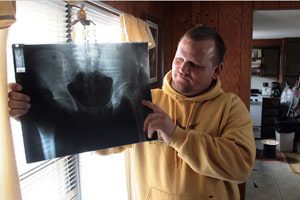
New research reveals that second-generation metal-on-metal hip implants are associated with adverse reactions. The Japanese study found that two-thirds of surgeries involving cementless metal-on-metal revision surgeries involved devices that were positioned out of the so-called “safe zone,” Helio reported. The devices also revealed signs of wear and, in some cases, patients reported that they suffered […]
 New research reveals that second-generation metal-on-metal hip implants are associated with adverse reactions.
New research reveals that second-generation metal-on-metal hip implants are associated with adverse reactions.
The Japanese study found that two-thirds of surgeries involving cementless metal-on-metal revision surgeries involved devices that were positioned out of the so-called “safe zone,” Helio reported. The devices also revealed signs of wear and, in some cases, patients reported that they suffered from allegedly adverse reactions to metal debris as long as 15 years during research follow-up, the study indicated.
“The second-generation metal-on-metal (MoM) cementless total hip arthroplasty (THA) encountered adverse reactions to metal debris in two hips,” Keiju Haraguchi, MD, of Osaka General Medical Center, in Osaka, Japan, recently announced, Helio reported. Dr. Haraguchi also noted that, “The survival rate at 15 years was 94.9 percent” involving revision for loosening not caused by bacteria and 71.2 percent for reoperation. The researchers found that “impingement caused by improper cup orientation” was a key factor for the life of “second-generation metal-on-metal total hip arthroplasty with a 28-mm head,” he said.
The Journal of Bone and Joint Surgery, indicates that impingement occurs over poor outcomes that follow prosthetic hip arthroplasty. Impingement can lead to instability, accelerated wear, and unexplained pain. Evidence of impingement associated with dislocation and accelerated wear has been the focus of a number of studies.
For this research, a retrospective review of outcomes in surgeries conducted with cementless Metasul MoM THA prosthesis in 87 patients between 1997 and 2002, was conducted. The procedures involved either the Zimmer APR cup or the Centerpulse Converge cup; 28 mm bearings were used in every case, said Dr. Haraguchi, Helio wrote. Nine men and 42 women—all at an average age of 60—were involved in the follow-up study.
Patients were followed up for approximately 12.3 years; the latest follow-up occurred at 15 years in some cases. Thirteen surgeons performed the hip device implants, according to Helio.
Stem neck notch formation, which indicates that impingement has occurred, was seen in 12 patients. Two patients developed metal debris reactions. Revision was conducted in two cases in which the cups loosened and in seven cases in which osteolysis occurred. Neck impingement was seen in every case, wrote Helio. The researchers also discovered that, in the Zimmer APR cup, liner dissociation from a poor liner locking mechanism occurred. “There is little benefit for continued use of metal-on-metal bearings in total hip arthroplasty,” Haraguchi said, according to Helio.
All-metal hip device implants were touted to last for at least two decades, and were originally thought to have provided increased range of motion over traditional hip replacement devices, which were constructed with plastic or ceramic components. Instead, the all-metal devices have been tied to high and premature failure rates, as well as increased blood metal ion levels and metal poisoning. Injury reports and mounting litigation have also included allegations of dislocation; pain; fracture; difficulty ambulating, rising, standing, and balancing; noise emanating from the joint; and pseudotumors.
Mechanical hip device implant wear is seen in all types of these devices over time because the femoral head and acetabular cup component surfaces will rotate against each other during typical wear and tear. In metal-on-metal systems, tiny shards of metal may be released during normal wear, which leads to a build-up of cobalt and chromium metal ions within the implant area.


